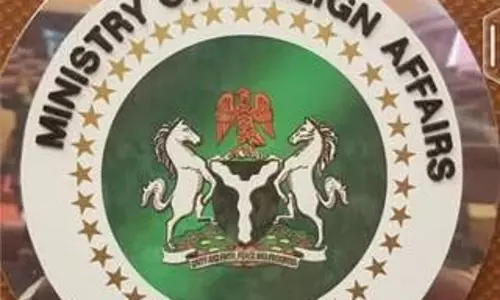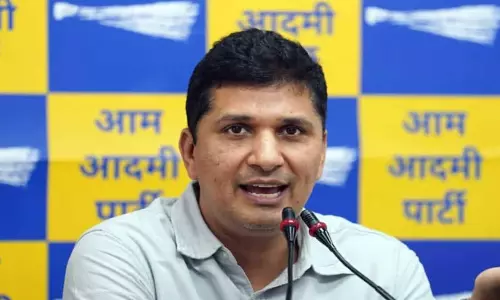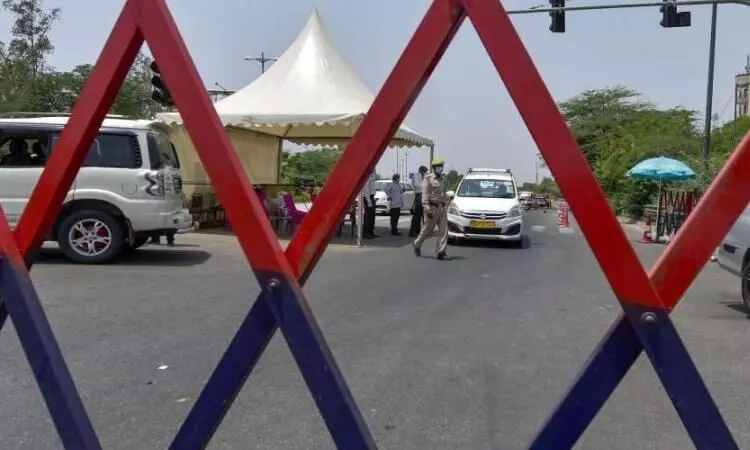
AI reveals India successfully used nudge campaign to fight Covid
text_fieldsRepresentational Image, credit: PTI
London : Using machine learning and AI-based algorithms to analyse almost 400 press releases issued by the Indian government, two Indian-origin researchers from University of Cambridge have revealed how the country effectively used the nudge theory in disseminating the Covid-19 related messaging across 14 key policy areas to over 1.3 billion people.
The nudges from Prime Minister Narendra Modi were particularly important in creating herd effect on lockdown and social distancing norms across the nation, argued the researchers.
"An even greater tragedy may have unfolded had India's government not used nudge theory to maintain one of the world's strictest and longest lockdowns in the first quarter of the year," said the study by Ramit Debnath and Ronita Bardhan from Cambridge's Behaviour and Building Performance Group, Department of Architecture.
Nudging, a concept in behavioural economics, political theory and behavioural sciences, is a design-based public policy approach which uses positive and negative reinforcements to modify the behaviour of a population.
India nudged across 14 key policy areas to influence the behaviour of 1.3 billion people, including government employees, scientists, health professionals, manufacturers, food suppliers and students to help fight Covid-19.
The government of India's use of nudge theory in the first three months of the pandemic helped to tackle the virus on numerous fronts, said the study published in the journal PLoS ONE.
"Nudge-based policy approaches are crucial in a democratic country like India which has a vast population and geo-spatial divide, high levels of illiteracy and an extremely vulnerable health system," said Debnath, a Gates Cambridge Scholar.
India has reported nearly five million Covid-19 cases and well over 80,000 deaths (as of September 16), making the country one of the worst hit in the world. But the implementation of the nudge theory earlier is "still saving lives".
In January and February, policy nudges were focused on evaluating the risk of incoming travellers from China and extending surveillance at international airports.
However, the narrative soon shifted to addressing other pressing concerns.
By March, nudges sought to impose new restrictions on travel, discouraging people from visiting crowded and public spaces, and strict social distancing.
On March 24, Modi told the nation that "21 days is critical to breaking the infection cycle... or else the country and your family could be set back 21 years".
The next day, the country entered phase 1 of lockdown.
The government nudged to tackle fake news about the virus and to convince the population to strictly adhere to the rules, use masks and wash hands frequently.
At the same time, it conducted surveillance in urban areas using smart technologies that included drones, spatial analysis, low-power Bluetooth mobile phone applications and humanoid robots.
"The government urgently needed to buy time and it had to bring a deeply divided population together to fight a common struggle. Our findings show that the government needed much more than scientific data to convince people, they appealed to powerful values including patriotism, family, religion and community," Bardhan stressed.
The study also highlighted the role played by the 'Prime Minister's Citizen Assistance and Relief in Emergency Situations Fund' (PM CARES Fund) which was created to nudge the public to make micro-donations and encourage public participation to help tackle the crisis.
The ministries nudged India's manufacturing firms to produce PPE, hand sanitiser and masks to meet the national demand, while also seeking to protect the country's food security and supply chains at a critical time -- India's farmers harvest their winter crops from February to April.
Meanwhile, the government spurred on India's scientific community to fight the pandemic, releasing funding through the Department of Science and Technology.
Research institutions were encouraged to submit proposals to focus on the development of affordable diagnostics, vaccines, antivirals, disease models, and other R&D to study Covid-19.
The Ministry of Human Resource Development also nudged the start-up and innovation community in India to participate in the fight for Covid-19 by launching programmes like 'Fight Corona IDEAthon'.
Emphasising that the study does not attempt to assess the success or failure of the government of India's policy interventions, the researchers said it rather aims to understand how context-specific latent nudges were created through policy interventions as the crisis unfolded.
The researchers used topic modelling, a computational social science method that has its basis in text mining and natural language processing. It automatically analyses text data to determine cluster words for a set of documents.
"Behaviour changes encouraged by nudges earlier in the year, including the wearing of masks and social distancing, are still widely maintained across India. These nudges are still helping to save lives," Bardhan said.























